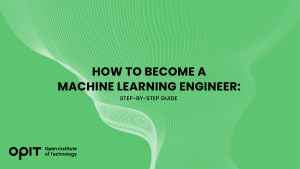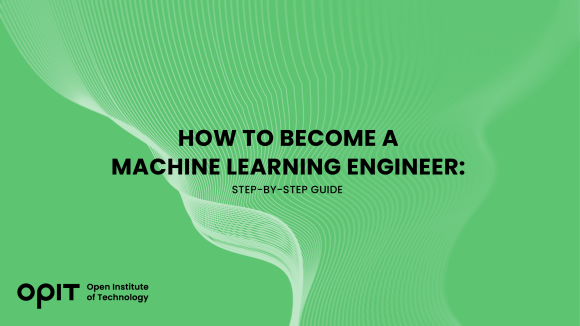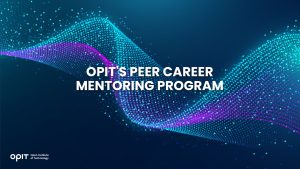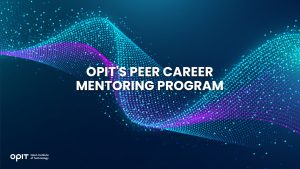

The demand for machine learning engineers is head-spinningly high. If you’re here, you are probably wondering how to become a machine learning engineer, the magic behind machine learning, and the savvy people behind it. In this domain, innovation meets practicality. Let’s unfold what it entails and why the demand has skyrocketed.
What Does a Machine Learning Engineer Do?
A machine learning engineer is the backbone of creating systems that can learn and make decisions with minimal human intervention. As a simple example, you could be teaching a machine to recognize a cat in a video or predict the next big trend in stock markets.
A machine learning engineer must perform a variety of tasks — from designing predictive models and fine-tuning their accuracy to deploying algorithms that can scale. They manipulate massive datasets, extract meaningful insights, and constantly learn to keep up with new advancements in the field.
You might wonder, “What are the machine learning engineer requirements?”
The requirements to become a machine learning engineer aren’t just about having a knack for programming or being great at math. Of course, those skills are necessary, but there’s more to it. You need to be curious, resilient, and eager to solve complex problems. Being able to communicate your findings and work collaboratively with others is just as big of a part of becoming a pro in machine learning. After all, what’s the use of a breakthrough if you can’t share it with others?
Educational Requirements to Become a Machine Learning Engineer
University degrees in computer science, data science, or Artificial Intelligence will give you a solid foundation. They cover everything from the basics of programming to the complexities of algorithms and data structures. Conversely, online or offline certifications might not be quite as comprehensive, but they make up for it by being more focused. Platforms for learning online also give you an in-depth look into machine learning specifics at your own pace.
Comparing the two, degrees offer a broad understanding and are great for foundational knowledge. At the same time, certifications can be seen as a bonus, providing specialized skills and up-to-date industry practices. Both paths have merits, and often, the best thing to do is to blend both. For a more detailed comparison, take a look at the article “Machine Learning Engineer Degree.”
Key Skills for Aspiring Machine Learning Engineers
First, your technical toolkit should include:
- Programming languages like Python or R
- Knowledge of algorithms
- Data modeling
These skills are the bread and butter that let you build and refine machine learning models that can tackle real-world problems.
But something to remember is that being technically adept isn’t enough. How to become a good machine learning engineer also hinges on your soft skills, such as:
- Communication
- Teamwork
- Resilience
- Problem-solving
The ability to communicate complex ideas clearly, work effectively in teams, and stay resilient in the face of debugging nightmares, along with problem-solving skills, are paramount. After all, you’ll be solving new puzzles every day. Also, while all these technical skills make for a terrific mix, you need creativity and curiosity. They fuel your innovations and discoveries in the ever-evolving field.
Building Experience in Machine Learning Engineering
Here are a few avenues to explore when building a machine-learning experience:
- Internships. There’s no substitute for real-world experience, and internships give you exactly that. They bring you face-to-face with the industry’s challenges and learning opportunities under the guidance of experienced mentors.
- Personal projects. If you’ve ever had an idea for a machine learning project, now’s the time to bring it to life. Personal projects are not only a fantastic way to test your skills but also to showcase your creativity and passion to potential employers.
- Open-source projects. Joining open-source projects can be a win-win. You get to contribute to meaningful projects, learn from the community, and make your mark in the field. It’s networking and learning all rolled into one.
Advancing Your Career With Specialized Machine Learning Knowledge
There’s always something new to learn in neural networks and AI. Specializations help you stand out in a field that’s very much in demand, and advanced education programs take you there. Deep learning, natural language processing, computer vision, robotics, reinforcement learning, and AI ethics are just some examples of potential specializations.
OPIT’s Master’s and Bachelor’s Programs are perfect examples of knowledge that’s equally deep and broad:
- MSc in Responsible Artificial Intelligence focuses on the ethical and societal impacts of AI. It prepares you to create technology that’s responsible as it’s advanced.
- BSc in Modern Computer Science provides a comprehensive foundation in computer science with a focus on modern developments, including machine learning.
- MSc in Applied Data Science & AI is for those who want to deepen their expertise in data science and AI, blending theory with practical application.
Enhancing Credibility With Machine Learning Certifications and Networking
Industry-recognized certifications polish your resume and, perhaps more crucially, signal your commitment and expertise to prospective employers, showing that you have the knowledge the industry feels is valuable. And let’s not forget the power of networking. Connecting with peers and mentors can open doors you never knew existed.
Career Prospects for Machine Learning Engineers
The horizon for machine learning engineers is vast and varied. Every sector, from tech giants to startups, is on the lookout for talent that can harness machine learning.
Healthcare, finance, tech, and even agriculture companies are eager to leverage AI to gain an edge. As a machine learning engineer, you could:
- Design algorithms to personalize content on streaming platforms
- Improve patient diagnoses in healthcare
- Predict client spending habits in banking and finances
- Optimize crop yields in agriculture
The variety of roles means there’s room for specialists and generalists alike. From data scientists and AI researchers to ML developers, the career paths are as diverse as the challenges you’ll tackle.
Partnering With OPIT for Your Machine Learning Engineering Journey
The right partner for your education can make all the difference, and OPIT is a beacon for aspiring machine learning engineers. OPIT offers a gateway to the future of tech through the following degrees:
- MSc in Responsible Artificial Intelligence that teaches you about AI ethics implications and social responsibilities and emphasizes real-world application.
- BSc in Modern Computer Science gives you a solid base in computing, opening doors to machine learning.
- MSc in Applied Data Science and AI is a program with hands-on projects that meet cutting-edge theory.
OPIT’s edge is in bridging in-depth learning and practical experience, minus the heavy-handedness of traditional schools and final exams.
Why Should You Become a Machine Learning Engineer?
The path to becoming a machine learning engineer is as exciting as it is rewarding, financially and professionally. As you learn, you’ll be coding in Python, untangling data, and figuring out how to make machines smarter. Yet, none of this would be enough without “softer” leadership, problem-solving, and communication skills.
With OPIT by your side and its master’s degrees in Responsible Artificial Intelligence, Modern Computer Science, and Applied Data Science and AI, you’re ready to take the future by storm.
Related posts

Source:
- Raconteur, published on November 06th, 2025
Many firms have conducted successful Artificial Intelligence (AI) pilot projects, but scaling them across departments and workflows remains a challenge. Inference costs, data silos, talent gaps and poor alignment with business strategy are just some of the issues that leave organisations trapped in pilot purgatory. This inability to scale successful experiments means AI’s potential for improving enterprise efficiency, decision-making and innovation isn’t fully realised. So what’s the solution?
Although it’s not a magic bullet, an AI operating model is really the foundation for scaling pilot projects up to enterprise-wide deployments. Essentially it’s a structured framework that defines how the organisation develops, deploys and governs AI. By bringing together infrastructure, data, people, and governance in a flexible and secure way, it ensures that AI delivers value at scale while remaining ethical and compliant.
“A successful AI proof-of-concept is like building a single race car that can go fast,” says Professor Yu Xiong, chair of business analytics at the UK-based Surrey Business School. “An efficient AI technology operations model, however, is the entire system – the processes, tools, and team structures – for continuously manufacturing, maintaining, and safely operating an entire fleet of cars.”
But while the importance of this framework is clear, how should enterprises establish and embed it?
“It begins with a clear strategy that defines objectives, desired outcomes, and measurable success criteria, such as model performance, bias detection, and regulatory compliance metrics,” says Professor Azadeh Haratiannezhadi, co-founder of generative AI company Taktify and professor of generative AI in cybersecurity at OPIT – the Open Institute of Technology.
Platforms, tools and MLOps pipelines that enable models to be deployed, monitored and scaled in a safe and efficient way are also essential in practical terms.
“Tools and infrastructure must also be selected with transparency, cost, and governance in mind,” says Efrain Ruh, continental chief technology officer for Europe at Digitate. “Crucially, organisations need to continuously monitor the evolving AI landscape and adapt their models to new capabilities and market offerings.”
An open approach
The most effective AI operating models are also founded on openness, interoperability and modularity. Open source platforms and tools provide greater control over data, deployment environments and costs, for example. These characteristics can help enterprises to avoid vendor lock-in, successfully align AI to business culture and values, and embed it safely into cross-department workflows.
“Modularity and platformisation…avoids building isolated ‘silos’ for each project,” explains professor Xiong. “Instead, it provides a shared, reusable ‘AI platform’ that integrates toolchains for data preparation, model training, deployment, monitoring, and retraining. This drastically improves efficiency and reduces the cost of redundant work.”
A strong data strategy is equally vital for ensuring high-quality performance and reducing bias. Ideally, the AI operating model should be cloud and LLM agnostic too.
“This allows organisations to coordinate and orchestrate AI agents from various sources, whether that’s internal or 3rd party,” says Babak Hodjat, global chief technology officer of AI at Cognizant. “The interoperability also means businesses can adopt an agile iterative process for AI projects that is guided by measuring efficiency, productivity, and quality gains, while guaranteeing trust and safety are built into all elements of design and implementation.”
A robust AI operating model should feature clear objectives for compliance, security and data privacy, as well as accountability structures. Richard Corbridge, chief information officer of Segro, advises organisations to: “Start small with well-scoped pilots that solve real pain points, then bake in repeatable patterns, data contracts, test harnesses, explainability checks and rollback plans, so learning can be scaled without multiplying risk. If you don’t codify how models are approved, deployed, monitored and retired, you won’t get past pilot purgatory.”
Of course, technology alone can’t drive successful AI adoption at scale: the right skills and culture are also essential for embedding AI across the enterprise.
“Multidisciplinary teams that combine technical expertise in AI, security, and governance with deep business knowledge create a foundation for sustainable adoption,” says Professor Haratiannezhadi. “Ongoing training ensures staff acquire advanced AI skills while understanding associated risks and responsibilities.”
Ultimately, an AI operating model is the playbook that enables an enterprise to use AI responsibly and effectively at scale. By drawing together governance, technological infrastructure, cultural change and open collaboration, it supports the shift from isolated experiments to the kind of sustainable AI capability that can drive competitive advantage.
In other words, it’s the foundation for turning ambition into reality, and finally escaping pilot purgatory for good.

The Open Institute of Technology (OPIT) is the perfect place for those looking to master the core skills and gain the fundamental knowledge they need to enter the exciting and dynamic environment of the tech industry. While OPIT’s various degrees and courses unlock the doors to numerous careers, students may not know exactly which line of work they wish to enter, or how, exactly, to take the next steps.
That’s why, as well as providing exceptional online education in fields like Responsible AI, Computer Science, and Digital Business, OPIT also offers an array of career-related services, like the Peer Career Mentoring Program. Designed to provide the expert advice and support students need, this program helps students and alumni gain inspiration and insight to map out their future careers.
Introducing the OPIT Peer Career Mentoring Program
As the name implies, OPIT’s Peer Career Mentoring Program is about connecting students and alumni with experienced peers to provide insights, guidance, and mentorship and support their next steps on both a personal and professional level.
It provides a highly supportive and empowering space in which current and former learners can receive career-related advice and guidance, harnessing the rich and varied experiences of the OPIT community to accelerate growth and development.
Meet the Mentors
Plenty of experienced, expert mentors have already signed up to play their part in the Peer Career Mentoring Program at OPIT. They include managers, analysts, researchers, and more, all ready and eager to share the benefits of their experience and their unique perspectives on the tech industry, careers in tech, and the educational experience at OPIT.
Examples include:
- Marco Lorenzi: Having graduated from the MSc in Applied Data Science and AI program at OPIT, Marco has since progressed to a role as a Prompt Engineer at RWS Group and is passionate about supporting younger learners as they take their first steps into the workforce or seek career evolution.
- Antonio Amendolagine: Antonio graduated from the OPIT MSc in Applied Data Science and AI and currently works as a Product Marketing and CRM Manager with MER MEC SpA, focusing on international B2B businesses. Like other mentors in the program, he enjoys helping students feel more confident about achieving their future aims.
- Asya Mantovani: Asya took the MSc in Responsible AI program at OPIT before taking the next steps in her career as a Software Engineer with Accenture, one of the largest IT companies in the world, and a trusted partner of the institute. With a firm belief in knowledge-sharing and mutual support, she’s eager to help students progress and succeed.
The Value of the Peer Mentoring Program
The OPIT Peer Career Mentoring Program is an invaluable source of support, inspiration, motivation, and guidance for the many students and graduates of OPIT who feel the need for a helping hand or guiding light to help them find the way or make the right decisions moving forward. It’s a program built around the sharing of wisdom, skills, and insights, designed to empower all who take part.
Every student is different. Some have very clear, fixed, and firm objectives in mind for their futures. Others may have a slightly more vague outline of where they want to go and what they want to do. Others live more in the moment, focusing purely on the here and now, but not thinking too far ahead. All of these different types of people may need guidance and support from time to time, and peer mentoring provides that.
This program is also just one of many ways in which OPIT bridges the gaps between learners around the world, creating a whole community of students and educators, linked together by their shared passions for technology and development. So, even though you may study remotely at OPIT, you never need to feel alone or isolated from your peers.
Additional Career Services Offered by OPIT
The Peer Career Mentoring Program is just one part of the larger array of career services that students enjoy at the Open Institute of Technology.
- Career Coaching and Support: Students can schedule one-to-one sessions with the institute’s experts to receive insightful feedback, flexibly customized to their exact needs and situation. They can request resume audits, hone their interview skills, and develop action plans for the future, all with the help of experienced, expert coaches.
- Resource Hub: Maybe you need help differentiating between various career paths, or seeing where your degree might take you. Or you need a bit of assistance in handling the challenges of the job-hunting process. Either way, the OPIT Resource Hub contains the in-depth guides you need to get ahead and gain practical skills to confidently move forward.
- Career Events: Regularly, OPIT hosts online career event sessions with industry experts and leaders as guest speakers about the topics that most interest today’s tech students and graduates. You can join workshops to sharpen your skills and become a better prospect in the job market, or just listen to the lessons and insights of the pros.
- Internship Opportunities: There are few better ways to begin your professional journey than an internship at a top-tier company. OPIT unlocks the doors to numerous internship roles with trusted institute partners, as well as additional professional and project opportunities where you can get hands-on work experience at a high level.
In addition to the above, OPIT also teams up with an array of leading organizations around the world, including some of the biggest names, including AWS, Accenture, and Hype. Through this network of trust, OPIT facilitates students’ steps into the world of work.
Start Your Study Journey Today
As well as the Peer Career Mentoring Program, OPIT provides numerous other exciting advantages for those who enroll, including progressive assessments, round-the-clock support, affordable rates, and a team of international professors from top universities with real-world experience in technology. In short, it’s the perfect place to push forward and get the knowledge you need to succeed.
So, if you’re eager to become a tech leader of tomorrow, learn more about OPIT today.
Have questions?
Visit our FAQ page or get in touch with us!
Write us at +39 335 576 0263
Get in touch at hello@opit.com
Talk to one of our Study Advisors
We are international
We can speak in:


